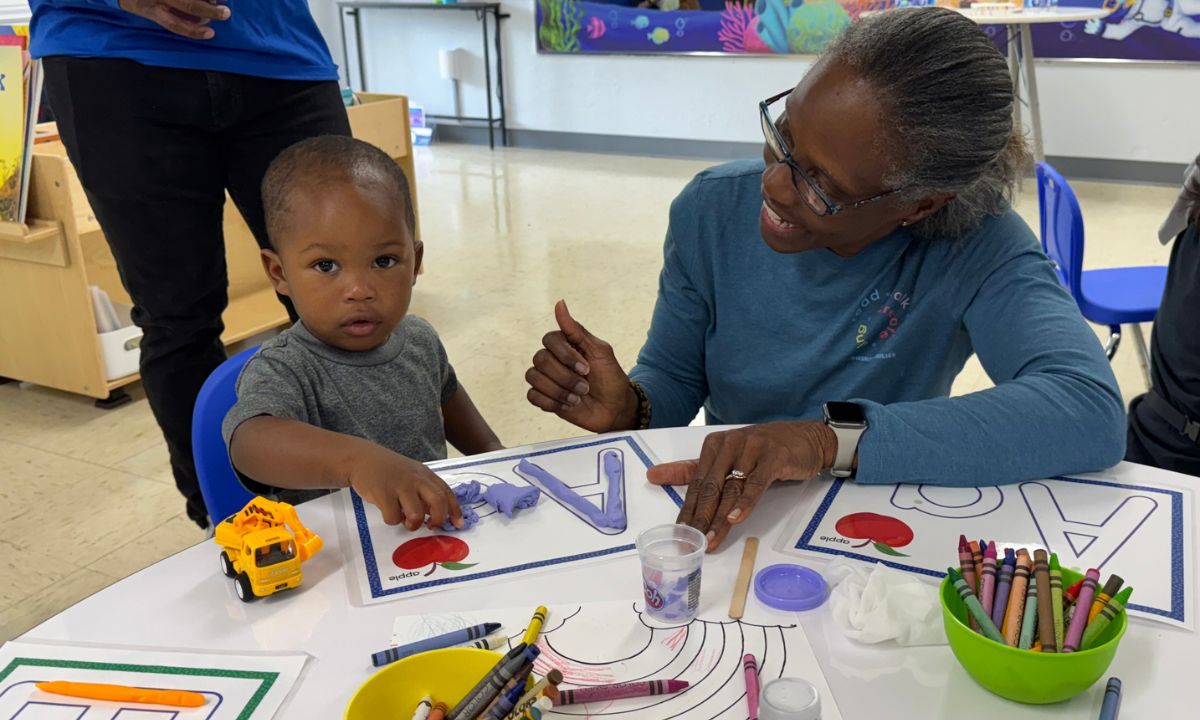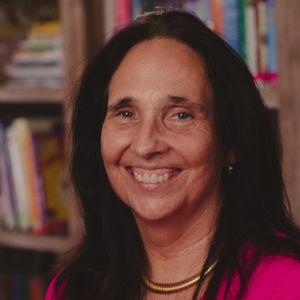Florida District Leans Into Science of Reading Starting in Early Childhood
Hammond: Educators and nonprofits cannot overlook the fact that what children experience from birth to age 5 can make or break literacy instruction.

Join our zero2eight Substack community for more discussion about the latest news in early care and education. Sign up now.
For more than a decade, my community of Indian River County, Florida, has committed itself to ensuring that 90% of students read on grade level by the end of third grade. This year, we reached a milestone in this work, with one of our elementary schools exceeding this threshold, a feat achieved by only 3% of Florida schools.
Our community’s commitment ensures that third graders get a lot of attention.
But our work starts well before third grade.
Early literacy begins with early childhood education. In our community, families of newborns get a custom lullaby to sing to their baby. We give families free books and learning kits so they have tools and resources in their homes. We create opportunities for community learning through our connection centers, events, playgroups and more.
This type of foundational work is imperative. Educators and nonprofit leaders cannot suddenly lean into the science of reading at first, second, or third grade and overlook the fact that what children experience from birth to age 5 can make or break these efforts.
After all, research indicates that disparities in cognitive and social-emotional development are evident as early as nine months of age and tend to widen by the time the child reaches age 2. By the time kids start kindergarten, children from higher socioeconomic backgrounds often score significantly higher in reading and math compared to their lower-income peers.
To close these gaps and put students in an infinitely easier position to read on grade level by the time they finish third grade, and to do so without making Herculean efforts to catch students up, the solution is simple: provide more access, sooner, to high-quality early childhood education.
In my home state of Florida, for instance, there are more than a million children ages 5 and younger. Two-thirds of these children’s parents work. For the sake of our economy, this is good news. The bad news is that federal and state early learning opportunities in Florida serve only 23% of children under age 6. Everyone else is left to pay out of pocket for home- or center-based care or cobble together a makeshift solution. Parents are scrambling to make sure their children are looked after. In these scarcity environments, the priority is finding coverage, not necessarily attaining high-quality care that builds cognitive, language, and self-regulation skills.
This gap between the early childhood education opportunities available to parents and what parents need is kneecapping our state’s future, and Florida is not alone. As a country, getting third-grade students reading on grade level would be infinitely more feasible if more students were building foundational skills in the pivotal early developmental period. And, in a country where just 33% of fourth-grade students are reading proficiently, we need all the help we can get.
Here in Indian River County, we do what we can with what we have. The nonprofit Childcare Resources provides high-quality early childhood education for children and training for educators. The Healthy Start Coalition integrates language development and health education into support services for young families. These programs and others are supported by a community of individual donors who make it possible to provide direct services to students and give parents the tools they need to be their child’s first teacher.
Through programs like The Basics — which prepare parents with modeling fun, loving, language-rich interactions that can be done anywhere and anytime — and Carnegie Hall’s Lullaby Project, parents learn tips and tricks for creating a learning environment in their own homes, reading together, and connecting the senses to reading through movement, music, and more. Children who participate in these programs and pre-K are more likely to enter kindergarten ready to learn.
When children reach elementary school, the nonprofit I lead works with the school district to provide instructional coaches and reading specialists in every elementary school, as well as to closely monitor students’ performance on interim assessments to determine where to provide extra support.
Effective early childhood programming is a tested strategy not only educationally but financially. Nobel Prize winner James Heckman and his team analyzed long-term data from high-quality early childhood programs, and they found a 13% annual return on investment per child when accounting for outcomes such as higher earnings, better health, reduced crime, increased productivity and reduced need for special education and social services.
This return is possible only with investment of not just time and money but also attention. Both the science of reading and the science of learning are based on brain development. How we interact with our youngest children, how we speak with our youngest children, and how we provide for our youngest children – starting before they are even born– will determine the extent to which young people grow up with a fair shot at a world of opportunity.
Get stories like these delivered straight to your inbox. Sign up for The 74 Newsletter


;)
